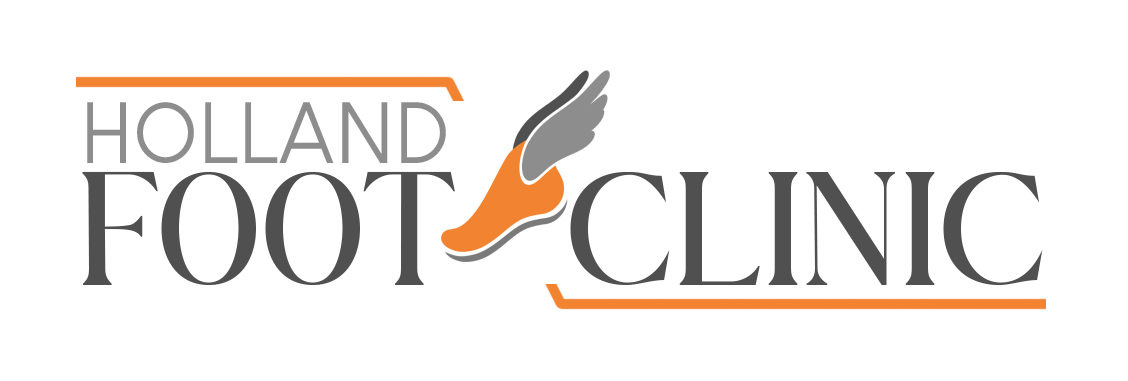Photodynamic Therapy
Photodynamic Therapy is a non-invasive treatment that uses a photosensitizing agent,which is activated by light of a specific wavelength, producing reactive oxygen species (ROS) that destroy fungal cells.
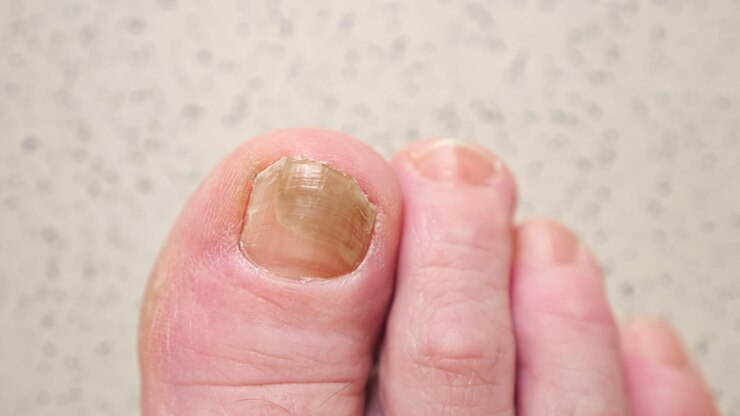
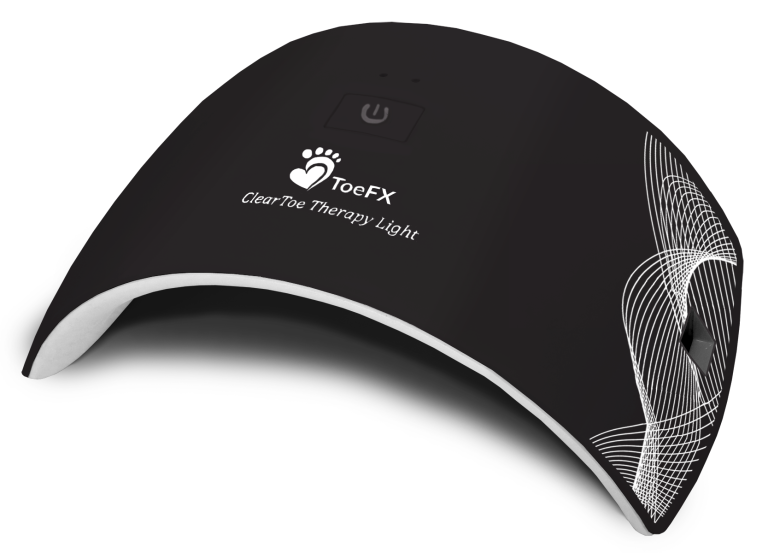
The laser treatment used at the clinic is called: ToeFx
How Does ToeFX Work in Fungal nail infection?
1. Photosensitizer Gel:
- A proprietary formulation applied directly to the affected toenail.
- Targets fungal elements in and under the nail.
- Incubated for 30 minutes prior to light exposure.
2. ToeFX Light Therapy Unit:
1. Emits red light (around 635 nm) which activates the gel.
2. This produces reactive oxygen species (ROS) that break down fungal
cell membranes and proteins leading to cell death
3. Each treatment takes about 30 minutes, with no pain or significant
discomfort.
4. Treatment Frequency:
○ Commonly done every 4-6 weeks.
○ 3–6 sessions are typical, depending on severity and response.
Use in Clinical Management Plan
Patient Selection:
- Ideal for:
Patients unresponsive to or intolerant of oral antifungals.
Those with contraindications to systemic therapy (e.g., elderly, liver issues, polypharmacy).
Mild to moderate onychomycosis (often better results).
Those seeking non-pharmacological options. - Combined Regimen:
ToeFX + Daily Topical Antifungal PDT Component Daily Topical
Reduces fungal load quickly Maintains suppression between PDT sessions
Can reach fungal elements under thickened nails Especially helpful if nail is debrided
Provides initial “debulking” Prevents recurrence - Common topical agents: Ciclopirox, Efinaconazole.
- Nail debridement by the chiropodist before each PDT session can increase
- Effectiveness of both PDT and topicals.
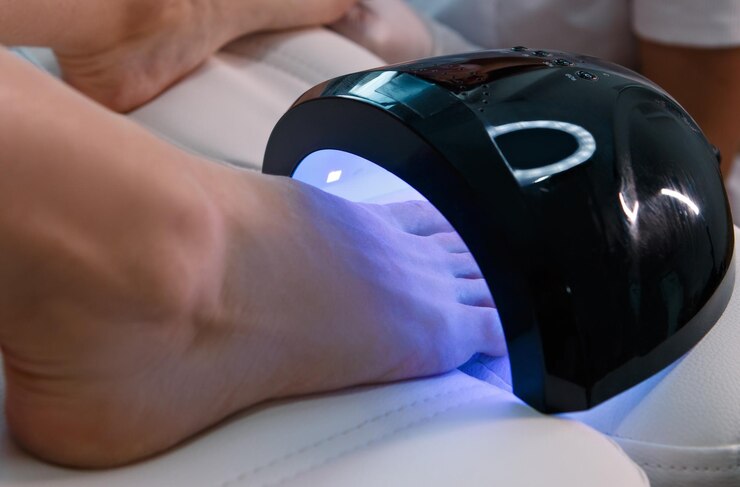
Safety & Side Effects
PDT is generally well-tolerated: Side Effect Description
- Pain/discomfort Mild tingling and warmth during light exposure (can be minimized with cooling, shorter exposure)
- Redness/swelling
- Temporary, subsides in 24–48 hours
- Photosensitivity Mild; advise patient to avoid sun exposure for 24–48 hours post-treatment
Nail changes Temporary yellowing or brittleness (rare)
Evidence Summary
● Clinical studies show clearance rates of 60–85%, often higher when combined with
topical therapy and debridement.
● More effective in superficial white and distal lateral subungual onychomycosis.
● Less effective in total dystrophic cases unless part of a long-term combined approach.
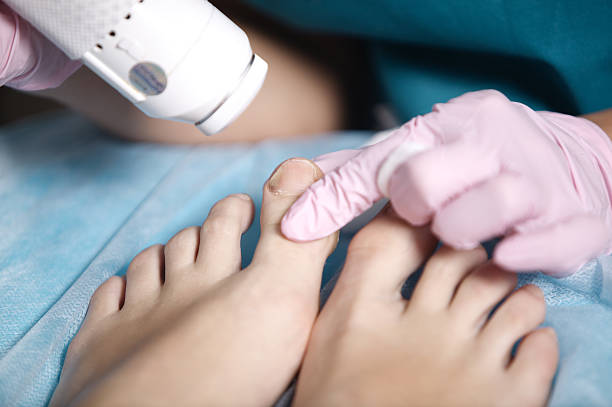
Key Takeaways for Chiropodists
● PDT is a viable adjunct or alternative to systemic therapy, especially for patients with contraindications.
● Optimal results come from integrated care: debridement, daily topical therapy, and multiple PDT sessions.
● Low systemic burden and high local efficacy make it a valuable tool in your podiatric practice.
Testimonials
What Our Clients Say
Call Today
(289) 290-3668
